Testing Ximea XiC MC023MG-SY camera with mono IMX174 sensor
Ximea is a machine vision company that makes a wide range of cameras from fast and small for vision applications to big cooled for more scientific and specialized use cases. In 2012 I've tested one of their cameras and now I've decided to check their progress by reviewing one of current cameras - USB3.1 MC023MG-SY camera with a mono IMX174 CMOS sensor.
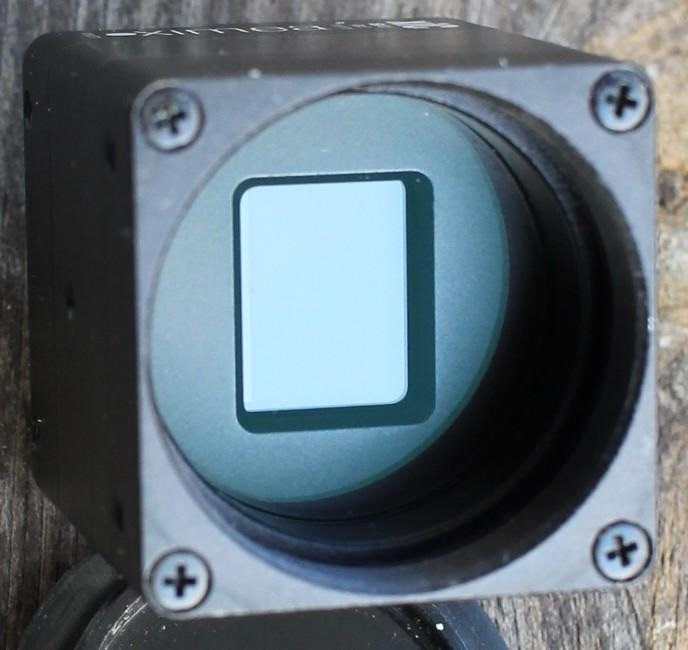
This review will be partially focused around astrophotography, yet it will contain general information about the software and performance of the camera. In 2012 I've tested xiQ MQ013MG-E2 with e2v EV76C560 sensor and in 2013 xiQ MQ042MG with big CMV4000 CMOSIS sensor.
Ximea XiC MC023MG-SY camera
The XiC family of cameras is based around USB 3.1 Gen 1 interface. The housing is really small - 26x26x33mm and weighs around 38 grams. The camera uses C/CS thread but due to relatively large IMX174 some C/CS lenses will not fully illuminate the sensor (1/1.2" diagonal). IMX174 is a well proven Sony CMOS sensor that have been used in astrophotography from planetary to deep space imaging. It offers nowadays large 5,86µm pixels and a 1936x1216 frame and a global shutter (handy when imaging fast moving objects). The camera is rated for 165 FPS RAW8 at full frame.
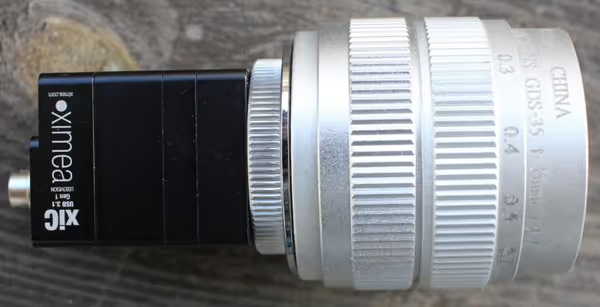
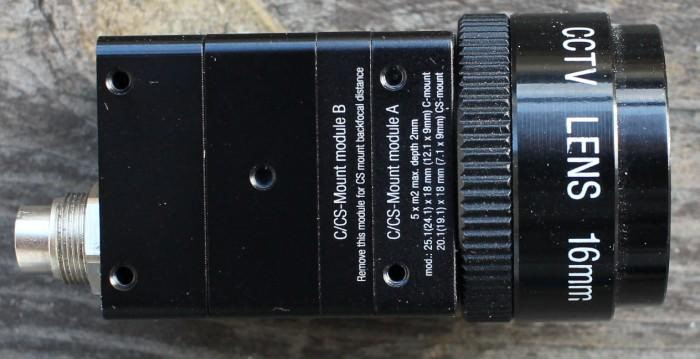
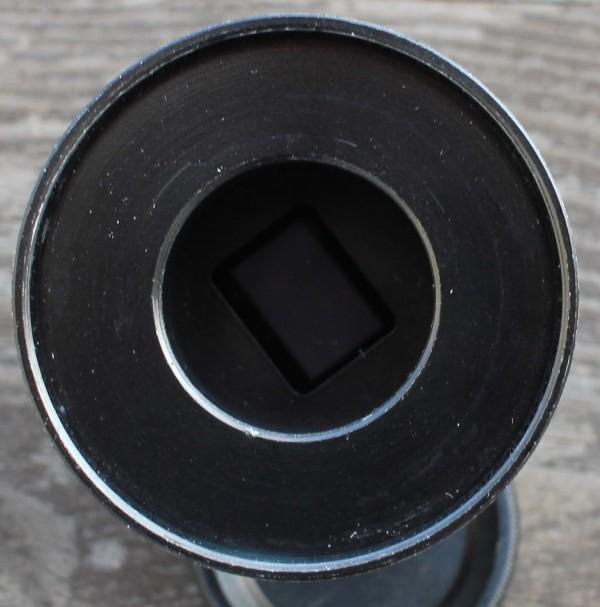
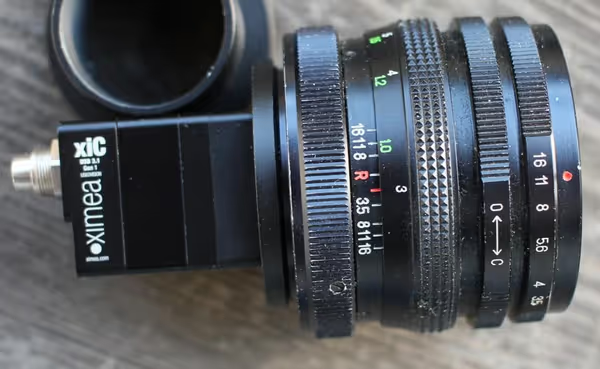
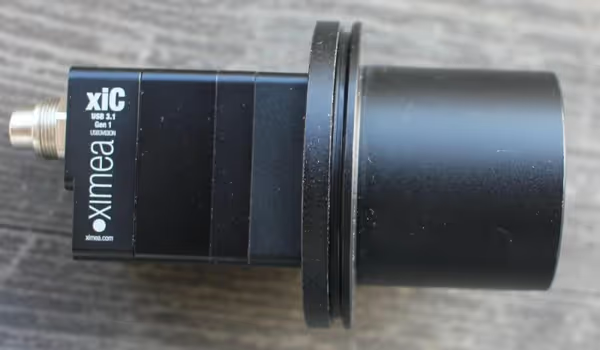
XiCOP
Ximea offers drivers and general purpose applications for Windows, macOS and Linux. XiCOP is a management application that lists all of the camera and USB controller parameters as well as detects possible problems (very good for debugging issues). It can also be used for firmware upgrades but that should be done when using validated (supported
) USB3 controllers (as if flashing goes badly it can brick the camera).
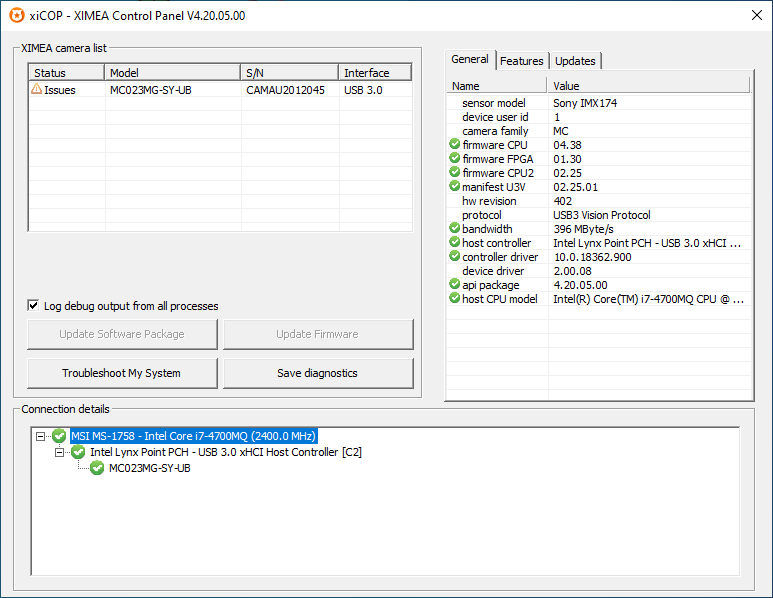
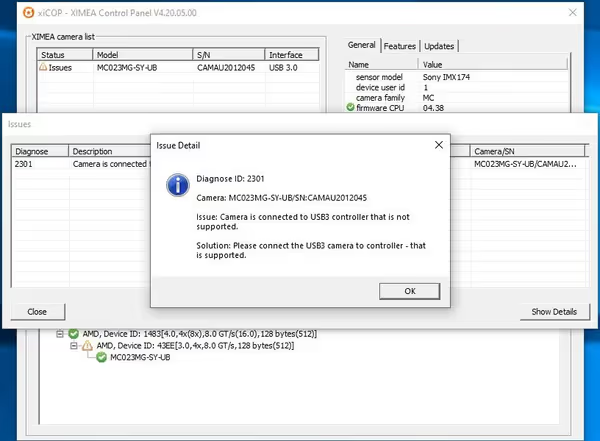
Ximea CamTool
Ximea CamTool is the imaging application. It allows capturing single frames as well as AVI clips. Exposure and gain can be controlled manually. When recording AVI files the app can use H.264 codec or save raw footage. For astrophotography and when quality is required use the RAW option.
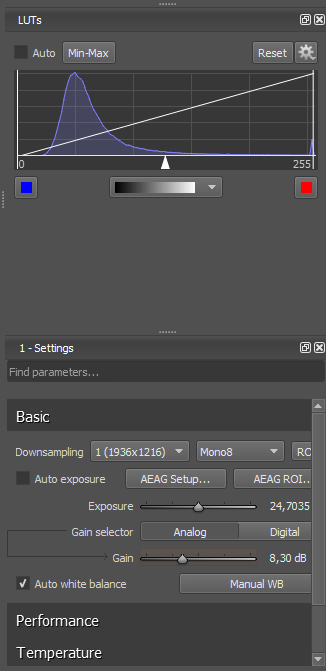
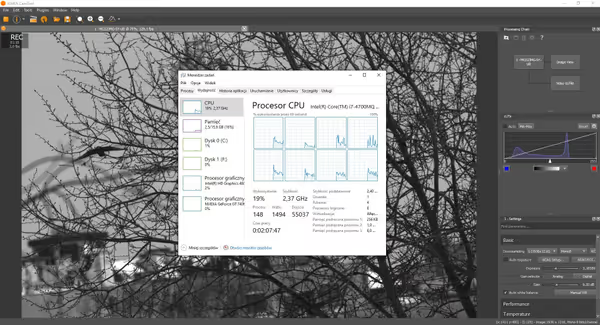
Third party applications like SharpCap won't detect the camera (no generic driver like WDM, DirectShow), however the company offers C, C++, C# and Python bindings to their API so it should be relatively easy integrating Ximea support with some existing applications. Ximea supports the GenICam standard as well as vision libraries like OpenCV, Halcon or LabVIEW.
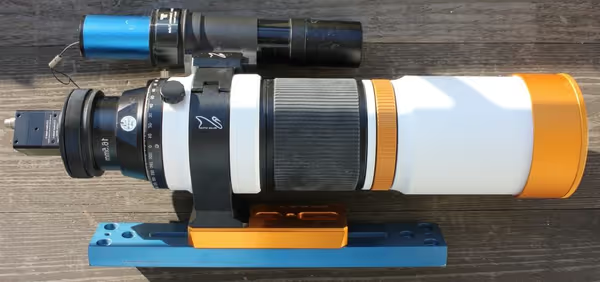
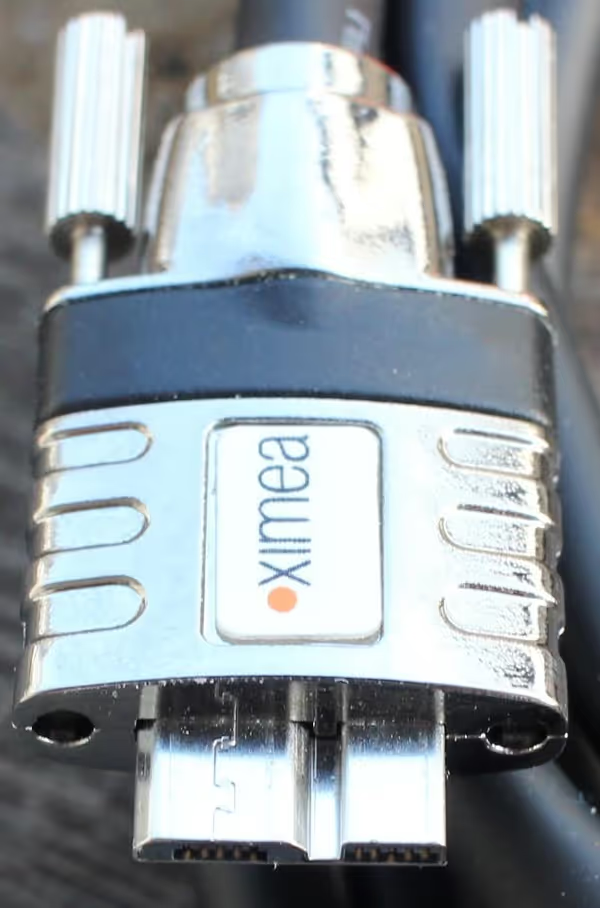
Imaging
During my review time I could not catch any planet due to their alignment and even Moon was usually hidden behind clouds or not available but I managed to test this uncooled camera on popular DS object - M42. The camera does support long exposures (to around 30s) so I used 3 second exposures at around 75% gain and RedCat 51 refractor with Baader Neodymium light pollution filter. Below you can see processed image, stacked from 1700 frames:
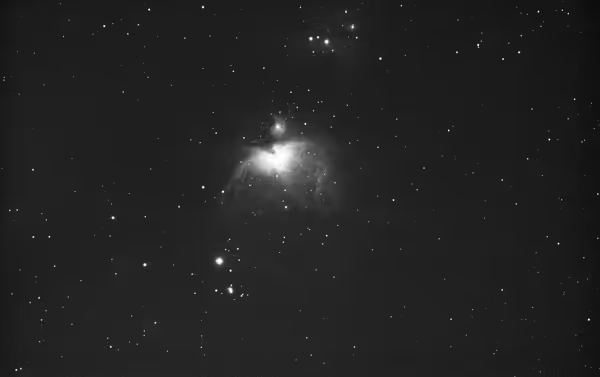
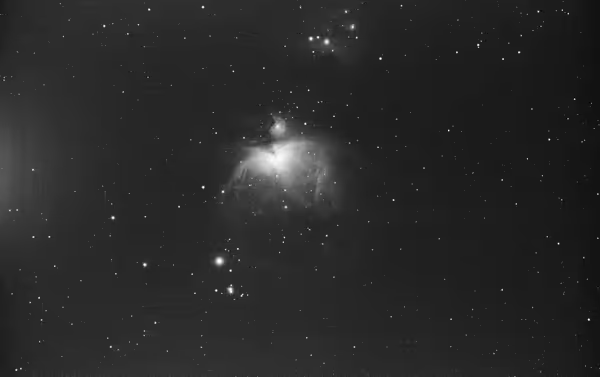
The image quality is really good. You can still see some horizontal banding but that should be fixed by using flat and bias frames (and usually bit longer exposures). The amp glow
is also quite low. Early ZWO cameras with Sony CMOS sensors did have problems with much stronger amp glow like effects.
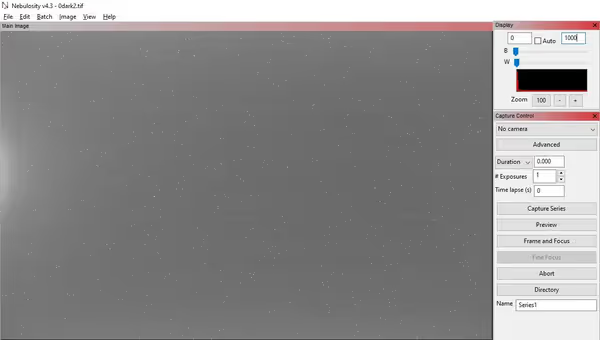
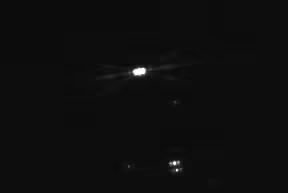
Bandpass imaging
Mono sensors are usually intended for more specialized imaging. As there are no RGB filters forming the Bayer pattern every pixel can be used with external bandpass filters. For starters I used Baader RGB filters to get a full frame shot via each of them to get a color RGB image:
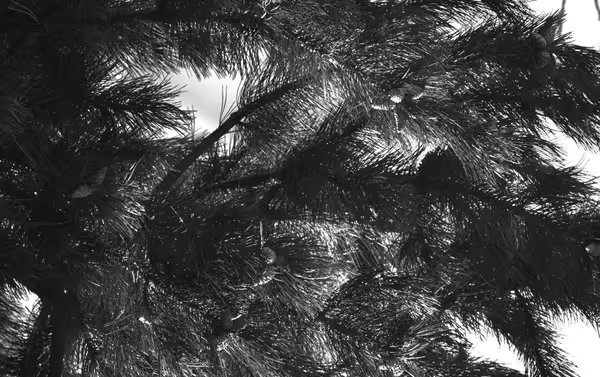
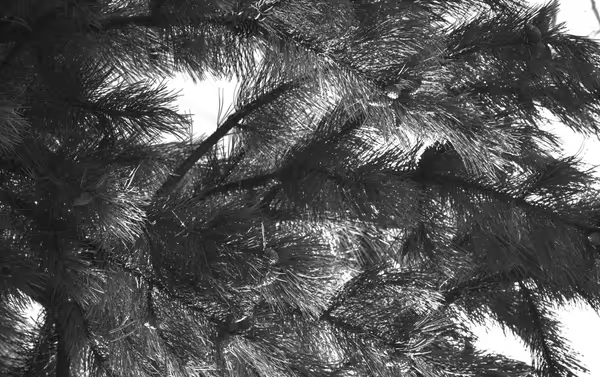
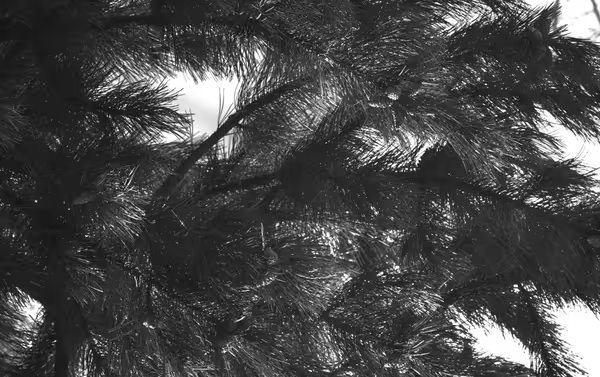

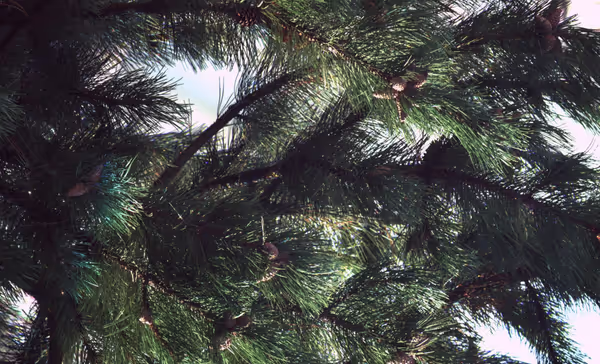
In a Bayer pattern 50% pixels would be green, 25% blue and 25% red, while when imaging via external RGB filters 100% of pixels will be used for each color channel and no debayering will be needed. The drawback is that the photographed scene can't change between shots.

Chlorophyll and other pigments present in leafs and pine needles don't really absorb infrared so direct sunlight is reflected and they appear as white.
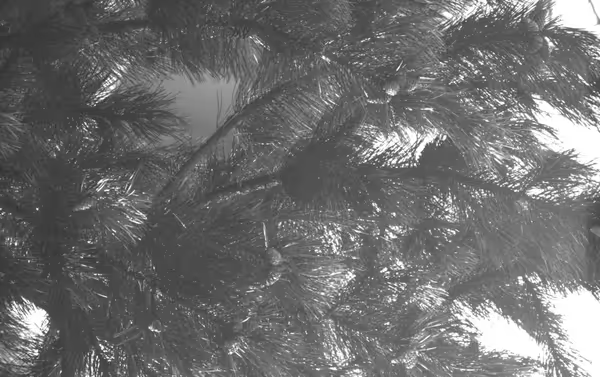
UV can be an important band for material analysis or Venus imaging, however silicon sensors loose a lot of their efficiency as the wavelength gets shorter. Exposure time for this filter was much longer even when part of the tree was in direct sunlight. Also note that for successful UV imaging you need a filter that doesn't leak in IR which for UV bandbass filters is hard to achieve. Astronomical filters (Astrodon, Baader, Chroma, Optolong and others) had to overcome this and nowadays they offer exceptional parameters. A cheaper option would be to use Wratten #47 violet filter stacked with Schott BG39 filter.
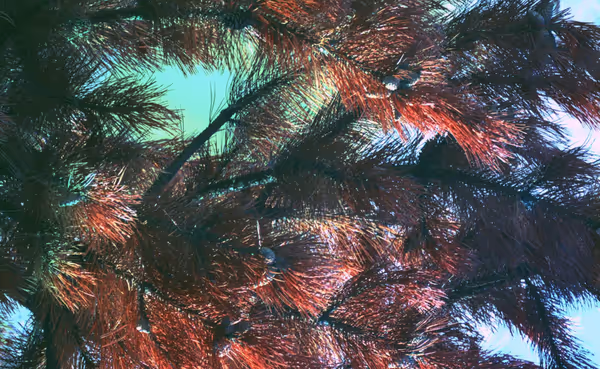
This is a false color image where red channel is IR filter, green is visible band (IR/UV cut filter) and blue is UV filter. Pine needles in direct sunlight appear red as they reflect a lot of IR wavelengths.
Ximea cameras in astrophotography
As of the time I'm writing this article there is no ASCOM driver for Ximea cameras as well as planetary capture apps like FireCapture and SharpCap won't handle them. You will have to use CamTool or write your own capture application (or add support for existing one). I've tested Python binding as well as C# bindings via IronPython and they do work without problems so it shouldn't be that hard. The cameras don't have an ST4 port so they can't work as an on-camera autoguider.
On the other side Ximea offers fast USB 3.1 cameras with proven Sony CMOS sensors. Aside of IMX174 they have the new 3,45µm pixel based IMX252/250/255/253 which aside of planetary imaging would be really good at fast Lunar and Solar imaging (similar to like Moravian Instruments offering).
Ximea just like QHY is also working on scientific cameras with GPixel GSense sensors - very large, very sensitive 16-bit and very expensive CMOS sensors.
And if you need really really fast large frame imaging then they have some cameras on PCIe interface.
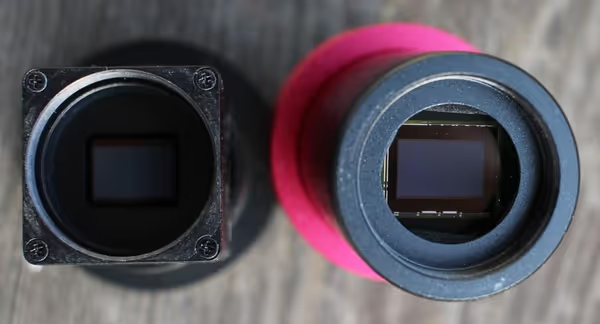
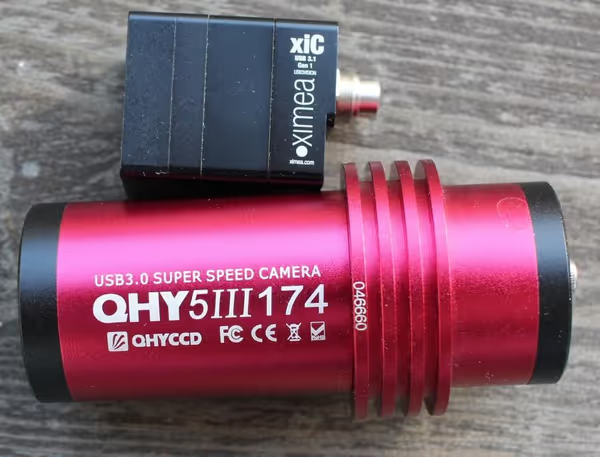
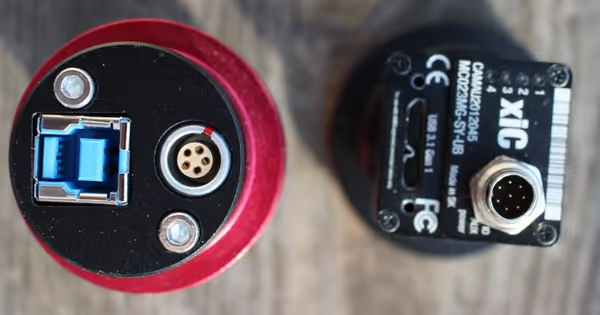
Comment article